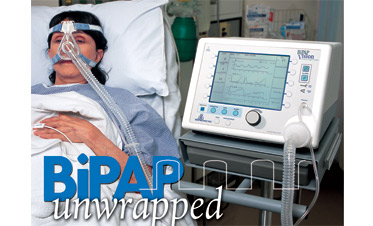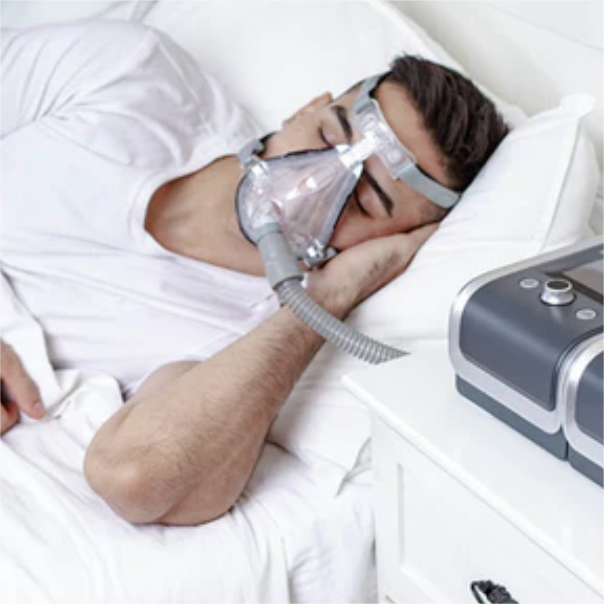Bipap vs. CPAP: Which Is the Best for Your Sleep Condition?
When navigating the intricacies of sleep problems, the choice between BiPAP and CPAP treatment is an essential factor to consider. Each modality provides unique advantages customized to particular problems, yet the choice hinges on individual patient requirements and comfort degrees. While CPAP supplies a stable airflow appropriate for obstructive sleep apnea, BiPAP's dual pressure settings might boost comfort for those with even more detailed respiratory concerns. Understanding these differences can dramatically affect therapy efficacy, leaving one to contemplate which choice absolutely aligns with their health and wellness requirements and lifestyle.
Comprehending Sleep Disorders
Sleep problems incorporate a variety of conditions that interfere with regular rest patterns, influencing both the quality and period of rest. These disorders can materialize in different forms, consisting of insomnia, rest apnea, narcolepsy, uneasy leg syndrome, and parasomnias. Each condition presents special difficulties, typically leading to considerable daytime exhaustion, cognitive disability, and psychological disruptions.
Sleeping disorders is identified by difficulty falling or staying asleep, while rest apnea includes duplicated disturbances in breathing during rest, usually causing fragmented remainder. Narcolepsy, on the various other hand, is noted by excessive daytime sleepiness and sudden sleep assaults. Agitated leg disorder triggers unpleasant sensations in the legs, triggering an uncontrollable desire to relocate them, which can also prevent the capacity to sleep.
The effect of rest problems expands beyond individual health, affecting overall performance, connections, and lifestyle. Understanding the particular nature of each disorder is important for effective diagnosis and treatment. As sleep health comes to be increasingly acknowledged as a crucial component of overall well-being, attending to these problems is important for boosting both sleep high quality and daily functioning.
How CPAP Functions
Constant Positive Airway Stress (CPAP) treatment is often used as a main therapy for obstructive sleep apnea (OSA) The system of CPAP includes using a machine that supplies a stable stream of air with a mask put on during rest. This air flow preserves favorable stress in the airway, stopping the collapse or blockage of the throat that can occur throughout rest.
When an individual inhales, the CPAP device gives a continuous flow of air, making certain that the air passage remains open - BiPAP Rental. This not just reduces the signs of OSA, such as snoring and interrupted sleep patterns, yet likewise decreases the connected health threats, including cardio difficulties and daytime tiredness
The stress setups on a CPAP machine can be customized to satisfy specific client needs, typically figured out through a rest research study. Individuals usually undergo titration research studies to locate the optimal stress level for their distinct problem. Routine follow-up and adjustments may be needed to guarantee efficiency and comfort. Overall, CPAP therapy has actually been shown to significantly enhance the high quality of rest and overall health and wellness for individuals experiencing from obstructive rest apnea.
Just How BiPAP Works
BiPAP, or Bilevel Favorable Respiratory Tract Pressure, is a specific kind of non-invasive ventilation that is particularly useful for people with conditions such as complex sleep apnea or breathing disorders. Unlike CPAP, which delivers a constant stream of air at a solitary stress, BiPAP supplies 2 distinctive pressure setups: a higher inspiratory stress for breathing and a lower expiratory stress for exhalation. This dual-pressure technique enables for much easier breathing, reducing the initiative called for throughout exhalation.
The gadget runs with a mask fitted over the nose or mouth, linked to a device that creates atmospheric pressure. When the person breathes in, the device supplies the greater pressure to aid with air movement, guaranteeing that the air passage stays open. Upon exhalation, the maker immediately lowers the pressure, making it much more comfy for the person to breathe out.

Secret Distinctions Between BiPAP and CPAP

In contrast, BiPAP (Bilevel Positive Air passage Pressure) uses 2 various pressure settings: one for inhalation and a reduced one for exhalation. This double stress system enables even more comfy breathing, specifically for patients that fight with breathing out against a constant stress. BiPAP is frequently suggested for patients with intricate rest apnea, chronic obstructive pulmonary condition (COPD), or those that call for extra assistance during rest.
In addition, the complexity of BiPAP gadgets typically leads to a greater price and calls for much more careful titration than CPAP. BiPAP Rental. Recognizing these key differences can aid in acknowledging which gadget might be better for specific sleep disorders, setting the foundation for informed therapy choices
Choosing the Right Treatment
The decision between BiPAP and CPAP therapy mostly pivots on the details features of the rest disorder, the individual's total health and wellness, and their comfort with the tool. CPAP, which delivers a continual stream of air, is typically prescribed for obstructive rest apnea (OSA)
Conversely, BiPAP gives two levels of stress: one for inhalation and a reduced one for exhalation. This double pressure system is useful for clients with complicated rest apnea or those who experience difficulty breathing out versus a continual pressure. Additionally, BiPAP is frequently recommended for people with respiratory system conditions, such as persistent obstructive lung condition (COPD), where varying pressure settings can boost comfort and conformity.
Ultimately, a comprehensive assessment by a rest professional, including a rest research, can assist identify which therapy lines up best with the individual's demands. Factors such as convenience, convenience of use, and details clinical conditions should likewise be considered to enhance treatment results.
Verdict
In summary, both BiPAP and CPAP offer distinctive functions in the monitoring of rest problems. CPAP is effective for obstructive rest apnea with regular air movement, while BiPAP provides double stress setups that boost comfort for those with intricate sleep apnea or respiratory problems. The option in between these therapies should be assisted by individual requirements and conditions, necessitating a comprehensive evaluation by a rest specialist to make sure ideal treatment end results and improved high quality of rest.

On the whole, CPAP treatment has actually been shown to get redirected here substantially enhance the high quality of sleep and total health for individuals experiencing from obstructive sleep apnea.
BiPAP is frequently suggested for individuals with intricate rest apnea, persistent obstructive pulmonary condition (COPD), or those who call for added assistance during sleep.
CPAP is reliable for obstructive rest apnea with constant air movement, while BiPAP offers twin stress settings that improve comfort for those with complex rest apnea or respiratory problems.